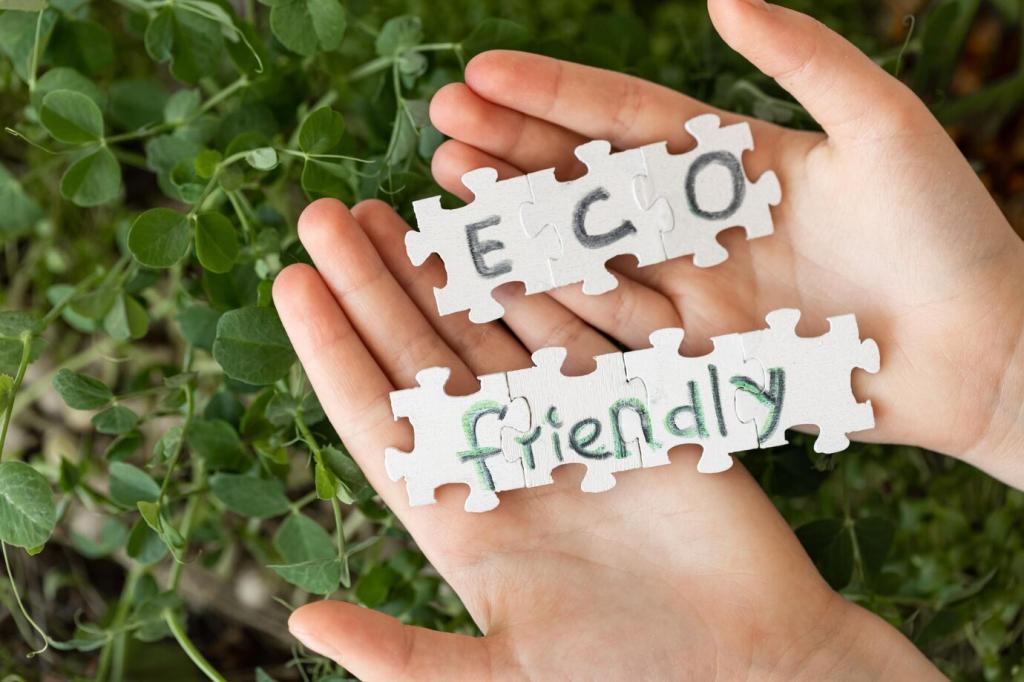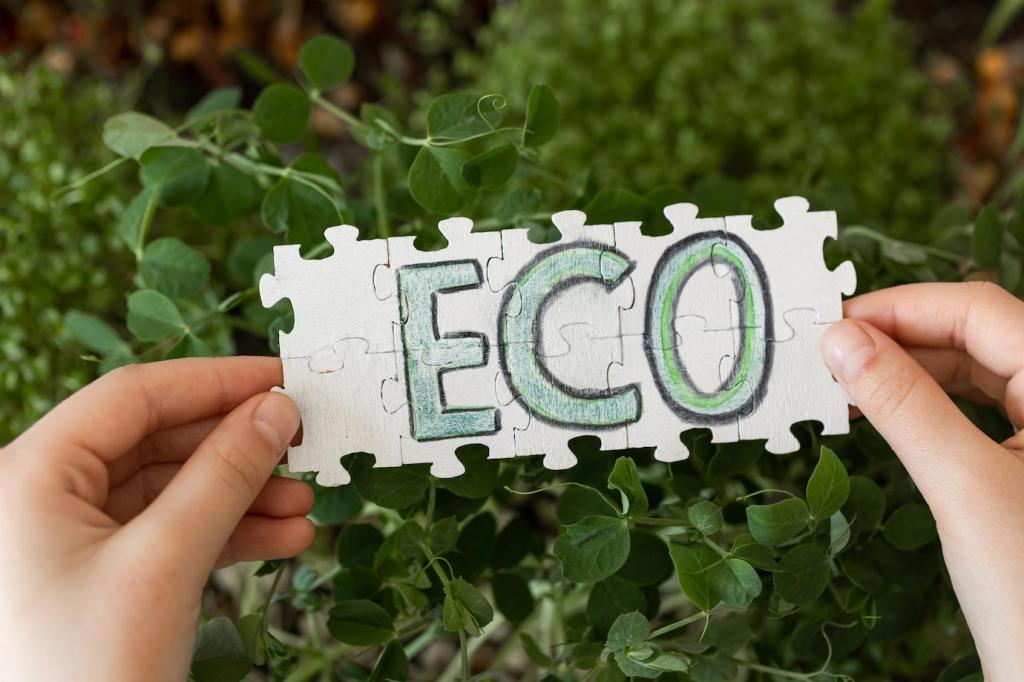Choosing sustainable materials for home renovations is not only an investment in your property but also a crucial step towards reducing your environmental impact. By integrating eco-friendly options into your renovation plans, you contribute to resource conservation, healthier indoor environments, and long-term energy savings. This page explores various sustainable materials and approaches to make your next home improvement project both stylish and responsible.
Reclaimed Wood and Its Unique Character
Sources of Reclaimed Wood
Authentic reclaimed wood is sourced from structures like old barns, factories, and docks, often dating back several decades or even a century. By diverting these materials from the landfill, renovators participate in a circular economy and reduce demand for new lumber. The wood often boasts exceptional durability due to its slow growth and dense grain, originally cut from forests that have long since disappeared. This means every piece is not only eco-friendly but also loaded with historical and aesthetic value.
Advantages for Home Renovations
When integrated into flooring, beams, cabinetry, or even accent walls, reclaimed wood instantly adds character and warmth to any room. Each board offers a unique grain pattern and imperfections that tell a story, distinguishing your home from cookie-cutter, mass-produced designs. Beyond its appearance, reclaimed wood can offer surprising strength and stability, having already withstood decades of use, and its reapplication ensures a lower carbon footprint for your renovation.
Environmental Impact
The reuse of lumber directly conserves forests and minimizes the energy used in harvesting, milling, and transporting new timber. Reclaimed wood typically requires less processing, contributing to reduced greenhouse gas emissions. By choosing this sustainable material, homeowners actively participate in conserving precious natural resources while supporting eco-conscious building practices.

Previous slide
Next slide
Low-VOC and Natural Paints
Volatile organic compounds are commonly found in standard paints and coatings, contributing to indoor air pollution and smog. Exposure to VOCs can lead to respiratory problems, allergic reactions, and environmental concerns. They evaporate into the air both during and after application, making indoor environments less healthy. Recognizing the risks associated with VOCs is the first step toward choosing safer alternatives for your renovation.

Sustainable Flooring Solutions
Bamboo Flooring
Bamboo flooring has gained popularity for its rapid renewability and contemporary look. As a grass, bamboo regenerates quickly and can be harvested within three to five years—much faster than hardwoods. Its natural durability and hardness make it suitable for high-traffic areas, and modern processing techniques deliver finishes that resist moisture and wear. By opting for responsibly-sourced bamboo, you support sustainable forestry practices and reduce the depletion rate of slow-growing woods.

Green Roofing Options
Cool Roofs and Reflective Materials
Cool roofs use reflective materials to deflect sunlight and prevent heat absorption, thereby reducing air conditioning needs during hot weather. These roofing materials can be made from light-colored shingles, specially coated metals, or single-ply membranes. By keeping homes cooler naturally, cool roofs lead to energy savings and lower greenhouse gas emissions. Their versatility makes them suitable for a wide range of architectural styles.
Living (Green) Roofs
Living roofs incorporate layers of soil and vegetation on top of waterproof membranes, turning rooftops into vibrant gardens. Besides creating aesthetic and ecological value, green roofs help absorb rainwater, lower building temperatures, and provide habitats for pollinators and birds. This type of roofing can also reduce urban heat island effects, contributing to more sustainable communities. Maintaining a living roof encourages ongoing engagement with nature.
Recycled Metal Roofing
Metal roofing made from recycled materials offers unmatched longevity and recyclability. Aluminum and steel are common choices, often sourced from post-consumer or post-industrial scrap. These roofs are lightweight, fire-resistant, and capable of reflecting solar heat. Once their service ceases, they can again be recycled, closing the materials loop. Metal roofs with recycled content thus support both durability and environmental responsibility in home renovations.
Eco-Friendly Countertop Options
Recycled glass countertops are composed of crushed, repurposed glass blended with concrete or resin to form stunning surfaces. These countertops are not only attractive, reflecting light and offering unique patterns, but also divert significant amounts of glass from the landfill. Their durability rivals that of traditional stone, and maintenance requirements are minimal. When choosing recycled glass, homeowners make a stylish, planet-positive statement in their spaces.
Paper composite countertops are created by compressing layers of resin-impregnated paper to form a strong, dense material. These surfaces often use recycled paper and water-based resins, resulting in a product that is both eco-friendly and adaptable to various design aesthetics. They boast resistance to stains and scratches, easy maintenance, and a softer feel compared to stone. Their lightweight nature can also reduce transportation energy, benefitting overall sustainability.
While stone is a non-renewable resource, responsibly sourced options like local or reclaimed granite, marble, or soapstone minimize transportation impacts and environmental degradation from quarrying. Certification programs now exist to ensure ethical labor and environmentally sensitive extraction. By choosing regionally sourced or reclaimed stone, homeowners enjoy durability and luxury without sacrificing their values.

Low-Flow Faucets and Showerheads
Low-flow faucets and showerheads are engineered to maintain strong water pressure while using much less water per minute than traditional fixtures. Aerators and flow restrictors optimize usage, offering the same comfort and functionality with lower utility bills. Switching to low-flow models can lead to dramatic reductions in daily water consumption, making them a top choice for eco-conscious renovators aiming for quick, impactful changes.
Dual-Flush Toilets
Dual-flush toilets provide users with two flushing options: a lower volume flush for liquid waste and a full-volume flush for solids. This system can reduce toilet water use by up to half compared to conventional single-flush models. Modern dual-flush mechanisms are reliable, user-friendly, and contribute significantly to water efficiency across the entire household. Their adoption is a practical way to align daily habits with sustainability goals.
Sustainable Sink Materials
The choice of sink materials can also influence the overall sustainability of a renovation. Recycled steel, cast iron with enamel, and sustainably sourced composite sinks minimize environmental impact over their lifecycle. These materials not only perform well under daily use but are also recyclable or biodegradable at end of life. By selecting sustainable sink options, homeowners close the gap between style, practicality, and environmental stewardship.
